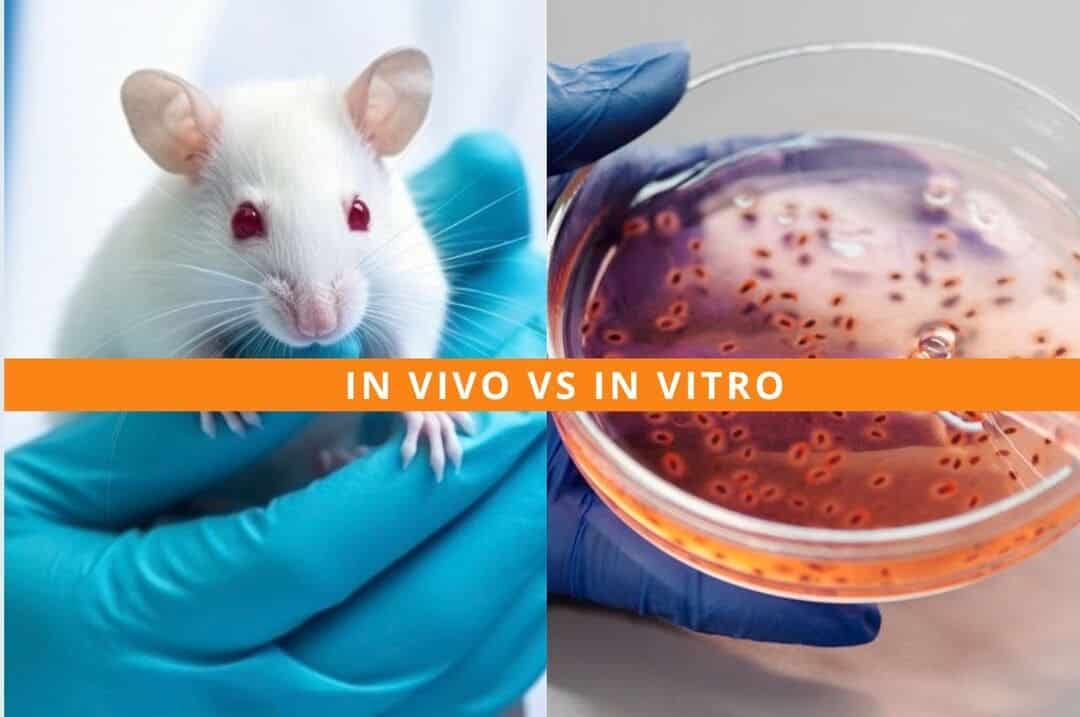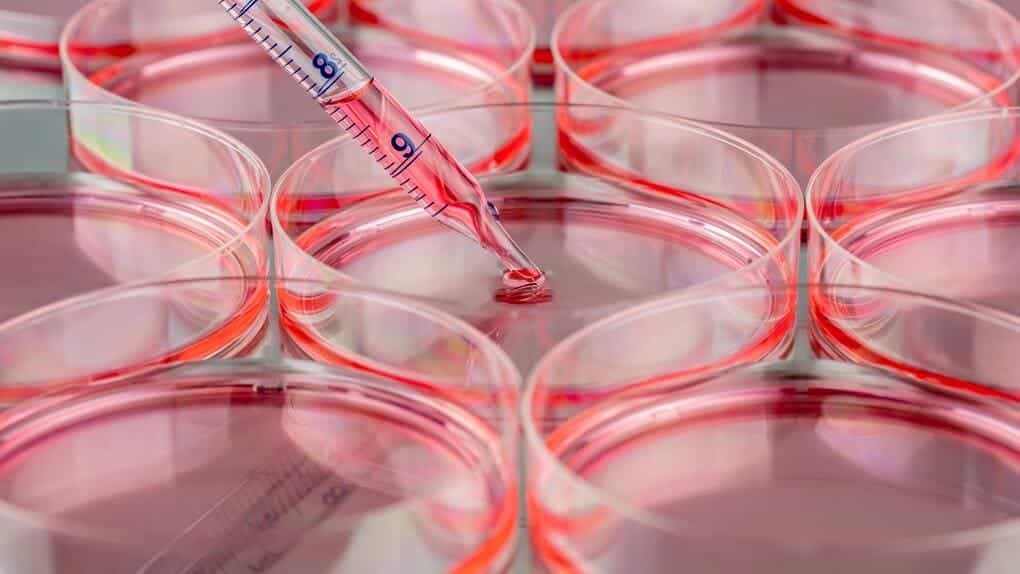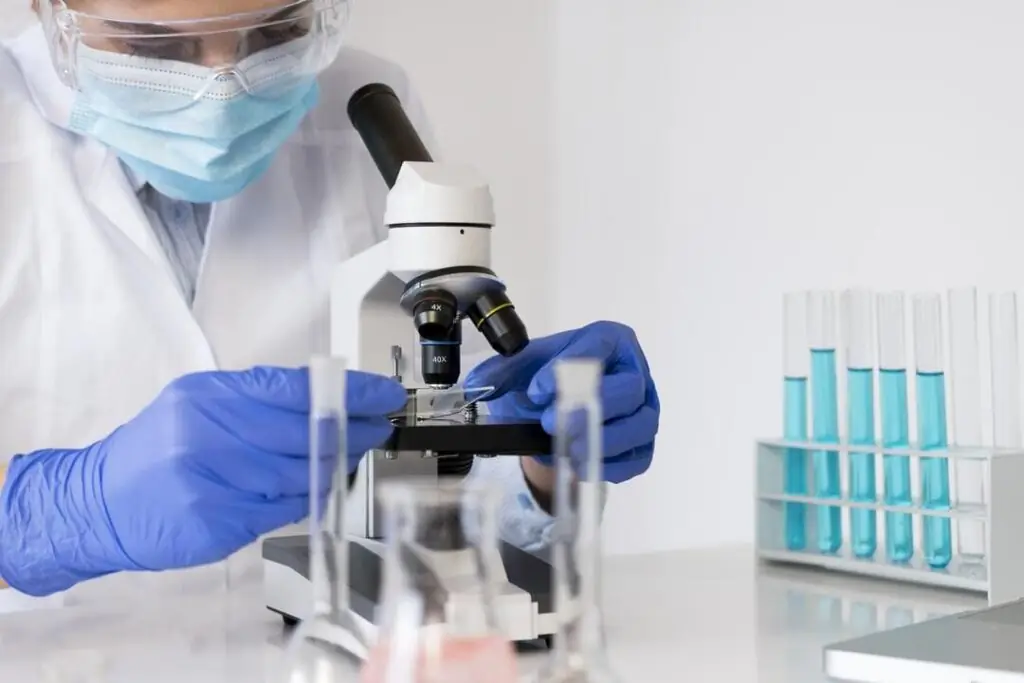Reference: EURL ECVAM. European Union Reference Laboratory for Alternatives to Animal Testing. European Commission Joint Research Centre (JRC). Available at: https://ec.europa.eu/jrc/en/eurl/ecvam ↩
Subscribe to our newsletter


In the field of scientific research, whether in biotechnology, health, food or cosmetics, it is essential to understand the different experimental approaches available to study the behaviour of compounds, ingredients, or products. Among these, in vitro or in vivo tests are two key methodologies, each with specific characteristics, applications, and advantages.
What is the definition of in vivo? The term “in vivo” comes from Latin and means “within the living.” It refers to experimental studies conducted on whole living organisms, such as animals or humans.
These studies allow the observation of the effects of an intervention (such as a compound, drug, or functional ingredient) within the real context of a complete biological system, where the complex interactions between cells, tissues, and organs are preserved.
Depending on the study’s objective, different animal models are used:
Drosophila melanogaster (fruit fly) is widely used in genetic and neurobehavioral research due to its ease of genetic manipulation.
Danio rerio (zebrafish) allows the study of embryonic development, toxicology, and gene function using techniques such as gene editing.
Rodents (mice and rats), and in more specific studies, non-human primates. These are employed to assess pharmacokinetics, toxicity, or efficacy of new compounds before entering human clinical trials.
Evaluation of the efficacy and toxicity of drugs, bioactive compounds, or functional ingredients.
Study of disease pathophysiology and progression.
Behavioral and neurobiological research.
Biodegradation and toxicity testing in complex chemical environments.
Enables a systemic and integrated analysis of a compound or technology’s effects.
Offers full physiological relevance, considering all metabolic processes and organic interactions.
Makes it possible to study chronic, multifactorial, or multi-organ effects.
Requires long execution and planning timelines.
Involves high economic and logistical costs.
Presents significant ethical implications, especially regarding animal use.
Shows higher interindividual variability, which can hinder interpretation in early research stages.
Although in vivo testing provides a comprehensive view, it is not always the first option. Increasingly, in vitro studies are promoted as a preliminary or alternative step, particularly in exploratory phases, aligned with the 3Rs principle: Replace, Reduce, and Refine the use of animals in research.

The term “in vitro”, from Latin meaning “in glass,” refers to studies, tests, or experiments conducted outside a living organism, in controlled environments such as laboratory plates, tubes, or bioreactors.
This type of experimentation allows the analysis of specific variables—such as cellular response, compound absorption, or enzymatic activity, without the complexity of a full biological system.
There is also the ex vivo approach (“outside the living”), which refers to the use of tissues or organs extracted from an organism but maintained viable under specific experimental conditions. Although isolated, these models retain part of the native environment’s architecture and function, making them useful for more advanced physiological studies than classic in vitro models.
To preserve the original biological system’s physiological, biochemical, and genetic characteristics, researchers often turn to human or animal cell cultures.
These cultures simulate specific functions of tissues or organs and fall into four main types:
Primary cultures, derived directly from tissues.
Secondary cultures, subcultures from primary ones.
Continuous cell lines, which can divide indefinitely.
Hybridomas, used for monoclonal antibody production.
Drug evaluation with organ-on-chip systems: Microfluidic devices that simulate key human functions (liver, gut, lung, etc.) using human cells, facilitating predictive efficacy and toxicity studies without animals.
Regenerative medicine and tissue engineering: Using 3D cultures, bioreactors, or biofunctional scaffolds to study tissue regeneration, wound healing, or cell-matrix interactions.
Assessment of dermal and transdermal absorption of cosmetic or pharmaceutical ingredients using reconstructed skin models or ex vivo tissues.
Gastrointestinal digestion and metabolism studies: Using in vitro gut models, ex vivo tissues, or digestive simulators to analyse the stability and transformation of bioactive ingredients.
Permeability and intestinal absorption models for ingredients, nutraceuticals, or food additives.
Corrosion, irritation, and skin penetration testing in the development of chemical or cosmetic products, using validated models such as reconstructed human skin.
Cleaning or disinfection tests on real tissues, useful in the healthcare or food sector.
Validation of food preservation or processing technologies, such as pasteurisation or high-pressure treatments, on animal tissues.
In vitro fertilisation (IVF): One of the best-known examples, where fertilisation occurs outside the body in a lab dish, before transferring the embryo to the uterus.

In vitro studies offer multiple advantages, making them essential tools for biomedical and pharmaceutical research.
They enable stricter experimental control, reducing interference from systemic variables and improving result reproducibility compared to in vivo models.
The use of human tissues obtained through surgery or donation enhances physiological relevance and human applicability.
Non-invasive techniques can be integrated, allowing dynamic studies of cellular and tissue processes without compromising model viability.
From an ethical standpoint, in vitro methods are a valid and preferred alternative to animal testing, aligned with the 3Rs principle (replacement, reduction, refinement). This promotes the minimisation of animal use by substituting with alternative methods, reducing animal numbers, and improving experimental conditions to limit suffering.
However, these techniques also have limitations:
The lack of a global immune or systemic response limits the ability to replicate some complex biological interactions seen in whole organisms.
Handling human tissues requires strict conservation and manipulation conditions to maintain their viability and functionality, which poses technical and logistical challenges.
In vivo, ex vivo, and in vitro models should not be seen as mutually exclusive, but rather as complementary tools within the biomedical, technological, and applied research ecosystem. Each provides specific advantages depending on the study’s objective, required complexity level, regulatory demands, or the type of compound or product being evaluated.
As scientific accuracy, ethical responsibility, and innovation efficiency take centre stage, in vitro testing is gaining prominence over animal models. While in vivo studies remain essential for exploring systemic responses, long-term toxicity, or complete pharmacokinetics, in vitro and ex vivo models offer more versatile, sustainable alternatives aligned with today’s scientific and industrial challenges.

This paradigm shift is supported by evolving regulatory frameworks that actively promote the use of alternative methods:
The EFSA encourages validated in vitro and mechanistic approaches for risk assessment.
Under the EU REACH regulation, alternative methods are prioritised over animal testing in the chemical sector.
In the US, the FDA and other agencies have begun accepting data generated through advanced in vitro platforms in pharmacology and toxicology contexts.
In Europe, the role of EURL ECVAM (European Union Reference Laboratory for Alternatives to Animal Testing) has been crucial in validating, harmonising, and promoting in vitro and alternative studies. This organisation not only assesses the scientific robustness of new methodologies but actively collaborates with regulatory agencies and international networks to facilitate regulatory acceptance and implementation across sectors such as cosmetics, medical devices, food, and industrial chemicals.
In sectors where ethical and regulatory requirements are particularly strict, such as cosmetics, functional foods, or nutraceuticals, in vitro and ex vivo studies are becoming key pillars of R&D&I innovation. Their ongoing development, coupled with regulatory support and the work of specialised institutions, signals a future in which biological relevance, sustainability, and ethical responsibility will become increasingly achievable.


| Responsible | AINIA |
| Address | Calle Benjamín Franklin, 5 a 11, CP 46980 Paterna (Valencia) |
| Purpose | To attend to, register and contact you to resolve the request you make to us through this contact form |
| Legitimation | Your data will be processed only with your consent, by checking the box shown on this form |
| Recipients | Your data will not be transferred to third parties. |
| Rights | You have the right to request access to, correct or delete your data. You can also request that we limit its processing, oppose it and request the portability of your data by contacting our postal address or [email protected] |
| More info | You can find more information in our Privacy Policy |
| DPO | If you have any questions about how we will treat your data or would like to make any suggestions or complaints, please contact the Data Protection Officer at [email protected] or at the Data subject support form |
I consent to the use of my personal data to process my request, as set forth in your Privacy Policy
I consent to the use of my data to receive information and commercial communications from your entity.
